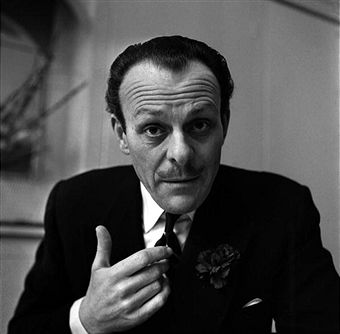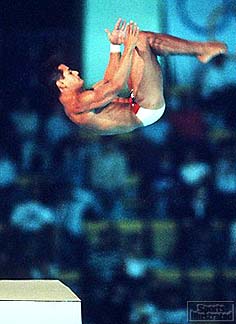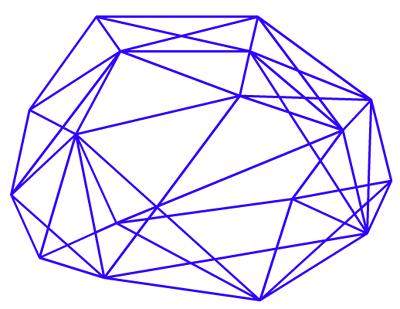Published in Omni circa 1982. I owe this assignment and all my others at this magazine to the late Kathleen Stein, my editor there — a former classmate at Bard College and flatmate in New York during one summer. — J.R.
The Arts: TV
Jonathan Rosenbaum
How far can the human braln go in delvlng into its own workings? An
ambitious, new eight-part television series — being produced by WNET
for airing this fall — broaches this question at the same time that it
partially answers it, byproviding us with a veritable Cook’s tour
through the state of contemporary brain research. “What curious art the
brain, too finely wrought, /Preys on herself, and is destroyed by thought,”
glumly opined eighteenth century writer Charles Churchill, in an epistle
addressed to artist William Hogarth. But Churchill’s philosophical lament,
quite apart from its odd characterization of the brainas essentially
feminine, can’t hold water in relation to the healthy self-preying instinct
adopted, by the makers of The Brain and all that it uncovers.
“It’s totally addictive to go into this,” science editor Richard Hutton, a
writer and producer on the series, admitted to me about his own perusal
of brain research, in preparation for the eight one-hour shows. At the
same time, he acknowledges the sheer technical difficulty of representing
a subject that is so tough to visualize: “It’s amazing to try to do a series
when the star of the series is something g you can’t really see.” When I
asked him whether any of his own notions about the brain had become
altered during this survey, he replied without hesitation, “Everything.
The brain is the most complicated organ there is -– and the most
complicated entity there is that I’ve encountered. It’s fascinating — ”
Certain aspects of this fascination of Hutton and his cohorts for their
subject can be gleaned from the titles of the eight programs. In order,
these are “The Enlightened Machine,” “Vision and Movement,” “The
Animal Brain,” “The Chemistry of Emotion,” “Learning and Memory,”
“The Thinking Brain,” “Madness,” and “The Brain Age”. In order to
make the concepts in each program legible to a lay audience as well
as stimulating to a more sophisticated one, the series focuses a lot
of its attention on the stories of actual brains belonging to real
people. This includes everything from the personal struggles of
comedian Terry-Thomas with Parkinson’s disease in his daily life
to the neural networks of platform diver Greg Louganis that are
in operation whenever Louganis executes a reverse 3 ½ dive with
a 1 ½ twist.
Also featured are the personal stories of many lesser-known
individuals — in some cases, people whose unusual brain
conditions have profoundly affected their day-to-day
existence. Philosopher Geraldo Guerniero, blind since birth,
has learned to “see” with his back through the use of a handheld
video camera that transmits visual signals to a grid of pressure
points on his back. Mitch Heller, who lost his sexual drive and
potency after a serious brain injury, managed to father a little
girl after being fitted with an “artificial hypothalamus” on his
belt which automatically supplies certain chemicals to his brain.
Mark Larribus went from being a gentle man to an extremely
violent one when a cyst developed on his brain, and then
returned to his gentle state after the cyst was removed. And,
by means of fictional recreation — a ten-minute sequence in
“The Chemistry of Emotions” that represents the only use of
docudrama in the series — The Brain also takes up the
curious, classic case of Phineas Gage, a railroads foreman
in the nineteenth century who underwent a disturbing
personality change after his cortex was severed from his
limbic system during an accidental explosion.
“The Animal Brain” focuses on those “primitive” aspects of the brain
that are essentially baggage from our animal ancestors, concentrating
on rhythms and drives through an examination of the hypothalamus
and pituitary — including the individual cases of Mitch Heller and
Mark Larribus, cited above. The biological clocks in the brain that
measure day and night and chart the seasons form the basis of two
other interviews in this segment.
One of these is with a French scientist, Michel Siffre,
who spent six months underground in order to
investigate the performance of his own biological
clock. Siffre found that without any sort of time cues
at his disposal, he was running on a 25-hour day;
after a month, he adjusted to running on a 48-hour
day. The implication is that we know how to
regulate ourselves without even the sun to guide us.
The gist of the other interview was vividly
described to me by associate producer
Peter Bull: “We all sort of get the blues in
the winter, but there are people who go
into the depths of depression, when they
sleep 12 to 14 hours a night, eat a lot and
can’t do anything — starting in the fall, when
the days are getting shorter, and ending in
the spring. They come out of their cocoons,
as it were, like butterflies; it’s unbelievable.
We did a whole sequence around a woman
like this, Pat Moore. The way they’re treating
her is amazing: when the winter months come
along, they start waking her up early in the
morning, and she sits in front of these full-
spectrum lights. Then late at night, before she
goes to bed, she does the same thing. So she
sort of artificially extends her daylight, to make
it like a summer day, and she comes right out of
her depression.”
In order to visualize certain brain functions, the
show is utilizing an arsenal of up-to-date techniques,
including computer animation, digital screen
simulation, time-lapse microphotography and
three-dimensional modeling. In Los Angeles,
animator John Allison has been building elaborate
models of the brain, many times larger than life,
and then using tiny cameras with minute
boroscope lenses that can travel up and down the
blood veins in this model.
In spite of such visual aids, The Brain ultimately
faces the challenge of having to explain various
processes to an audience that is more accustomed
to thinking about the brain in terms of specific
organs. Because the actual structure of how people
look at the brain is largely what’s at issue, Richard
Hutton and Peter Bull are both hoping that the
series will turn around some of our more
outmoded thinking habits about the brain: the ways
that we think about memory, for instance.
While many of us tend to think of our separate memories being
stored away as if in a bank vault, at least one commentator
has suggested that a hologram might provide a more accurate
visual model for the process of remembering. (If you remove
an entire section of a hologram, it can still basically function
as a complete entity; so too, it appears, can the brain.) As Bull
describes psychologist Daniel Hebb’s theory of cell assembly,
“You don’t have one cell that has, say, your memory of your
grandmother’s face, or that evening you spent with your
friend at the restaurant. You have a whole bunch of cells
that are interconnected, which, when activated by an
associative link which stimulates a series of cells,
generates your memory of having that particular
dinner.” In short, memories are put together out of
an elaborate cross-indexing system.
The final program in the series, “The Brain Age,”
will feature three dramatic stories centering on
the brain and self-awareness: the phenomenon of
rapid eye movements in fetuses, which suggests
the possibilities of REM sleep and dreams in a
prenatal state; the case of Tony, a multiple
personality in his late thirties who has at least
as many selves as he has years, and whose
fragmented consciousness offers another
variation on the awareness theme; and the
plight of a 51-year-old musician and music
teacher named Eleanor who is shown during
the middle stages of Alzheimer’s disease.
For Hutton, an important part of each of
these segments is not so much what we know
about the brain as what we still don’t know.
We don’t know, for instance, that fetuses
dream -– only that they have REMs, and that
REM sleep in infants and adults marks the
stage at which dreams occur. We don’t know
the precise relationship between the brain
and multiple personality, either -– unless
we note the brain’s capacity to tune out
distractions, which multiple personality
exaggerates to a pathological degree and
makes involuntary. And we hardly know
anything about Alzheimer’s disease, which
Hutton considers the biggest clinical
question in brain research today.
“Alzheimer’s disease is a memory story, but not really a memory
story,” Hutton notes. “What it does, ultimately, is change behavior
and personality. It’s a destruction of global awareness. If you look
on awareness as something that reaches an evolutionary fulfillment,
if you wish, in human beings, than Alzheimer’s disease probably
destroys the most human functions we’ve got.” In the case of
Eleanor, we see a woman with a master’s degree in music who
taught in public schools for many years and was in charge of
music at her church. “Her daughter followed her in music, and
now has taken over most of her roles in church. Eleanor is still
hanging on, but she’s lost a lot. She can sight-read any piece
of music you put in front of her, but she can’t make a cup of
coffee. It’s real sad.”
In order to rethink what the brain is, with or
without self-awareness, it seems that we need
to reflect more on interactions and processes
and less on individual parts in isolation from
one another. Indeed, from the available
evidence, it appears that interconnections
will be the message as well as the medium
of The Brain, promising an intriguing
kaleidoscope of possibilities. “If you had
to take a part of the brain that meant
something,” Hutton argues, “you wouldn’t
just take the right or left hemisphere.
That, for neuroscience, is bullshit. It’s the
synapse, where two cells talk to each other.
When we understand the synapse, a lot
of things are going to fall into place. That
involves the chemistry of the brain and the
anatomy, too – because you have to worry
about which cells of the brain are talking to
which, and why they get together. If
consciousness or self-awareness or perception
emerges, as most people think, from the
organization of the brain, then dealing with
the synapse when you think of something, or will
something, or want to move your finger –- these
are all really important thoughts.”










